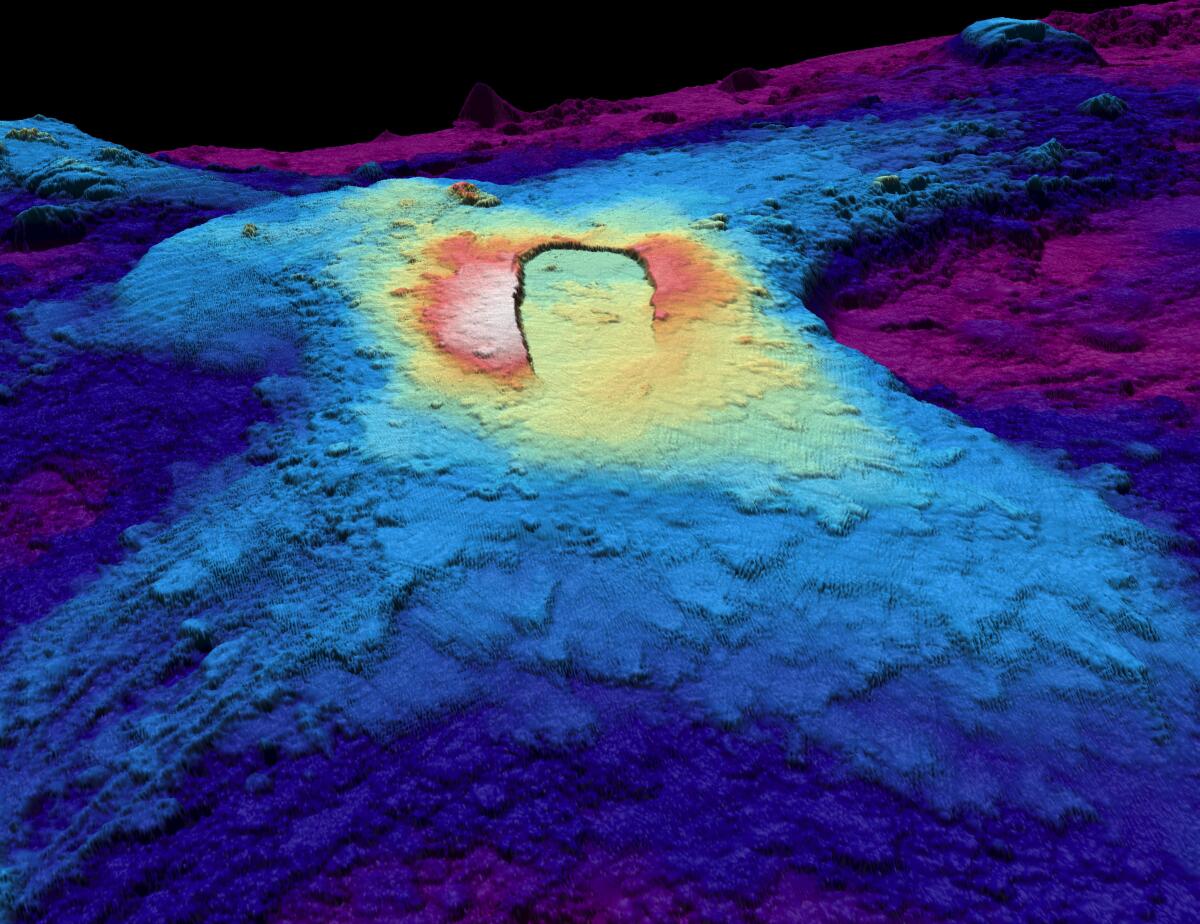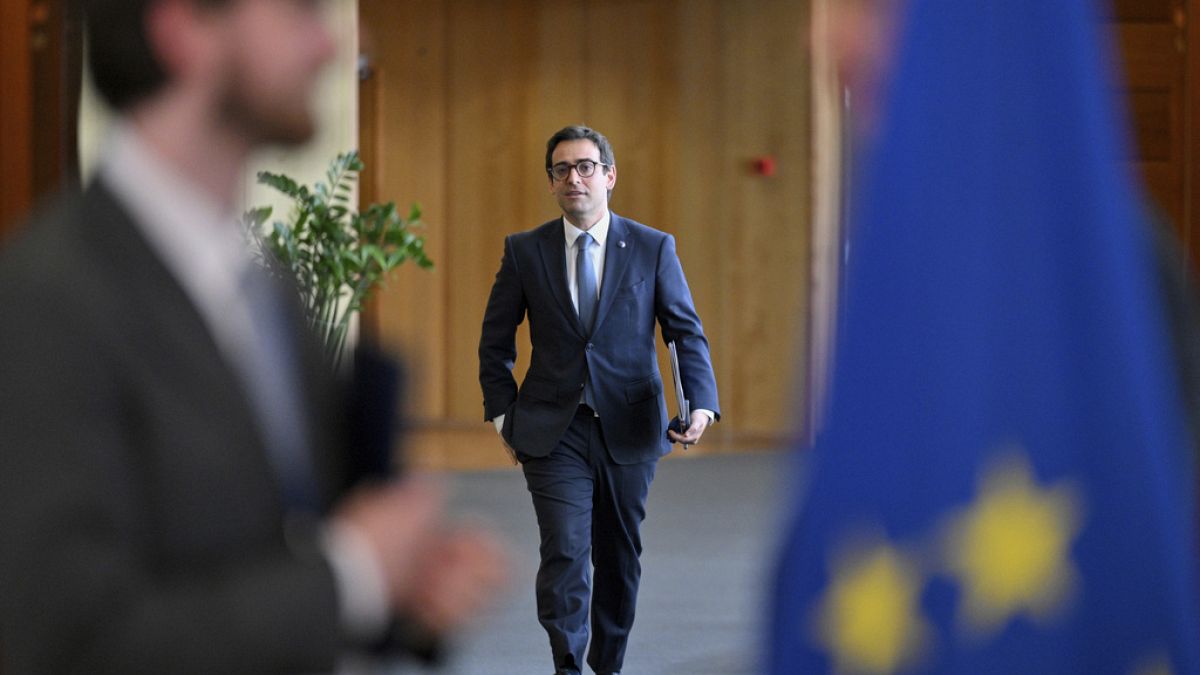Science
Olympic boxing controversy sparks fierce debate over inclusivity in women's sports

A Summer Olympics that hoped to champion inclusivity — choosing “Games Wide Open” as its slogan — has become embroiled in loud, angry debates over who should and should not be allowed to compete as a woman.
The dispute has triggered conflicting official statements, pointed comments and unhinged social media posts, all whirling around two athletes in the women’s boxing competition at Arena Paris Nord.
This isn’t about how Imane Khelif of Algeria and Lin Yu Ting of Taiwan identify. By all accounts, they were born as women but appear to have unusual body chemistry that triggered gender tests and caused them to be disqualified from last year’s world championships.
The Olympics, however, have broader eligibility rules.
“I think we all have a responsibility to dial down this and not turn it into some kind of witch hunt,” International Olympic Committee spokesman Mark Adams told reporters. “These are regular athletes who have competed for many years in boxing, they are entirely eligible and they are women on their passports.”
His plea has been overshadowed by a Thursday afternoon bout in which Khelif punched an opponent hard enough to make her quit after 46 seconds. Paris has been lumped in the same category as previous controversies involving South African runner Caster Semenya and U.S. collegiate swimmer Lia Thomas.
This case might be more incendiary because, instead of running or swimming fast, Khelif and Lin are delivering potentially lethal blows. Italian boxer Angela Carini said she conceded to Khelif because “I had to safeguard my life.”
Experts wonder if the sports world has reached an inflection point.
“We really have not come up with a consensus on how we define sex,” said Jaime Schultz, author of a new book titled “Regulating Bodies: Elite Sport Policies and Their Unintended Consequences.” “People have to learn how to talk about this.”
Over the last 24 hours, much of the public discourse has inaccurately described Khelif and Lin as transgender. Former President Donald Trump posted on Truth Social: “I WILL KEEP MEN OUT OF WOMEN’S SPORTS!”
Taipei’s Lin Yu Ting, red, takes a punch from Uzbekistan’s Sitora Turdibekova in the Women’s 57kg boxing match.
(Wally Skalij/Los Angeles Times)
There is no evidence that either boxer is transgender or has chromosomal abnormalities. Though purposefully vague, officials have described what appear to be “differences of sex development,” a designation that applies to women who are androgen-sensitive or have naturally occurring testosterone levels in the male range.
The international track federation used this standard to demand that 800-meter star Semenya either take medication to alter her body chemistry or race against men. She fought the decision, losing in the Federal Supreme Court of Switzerland.
Sports have a long and troubled history with gender testing.
Early on, female athletes were forced to disrobe for physical inspections. Chromosome tests came into fashion for a while but were successfully challenged by Spanish runner Maria Jose Martinez-Patino in the 1980s because they could not account for rare conditions.
Though testosterone is now a common measure, there is continued disagreement over its validity.

Italy’s Angela Carini, left, cries after her loss to Algeria’s Imane Khelif at the Paris Olympics on Thursday.
(John Locher / Associated Press)
“These criteria keep folding under the weight of closer scrutiny,” said Schultz, who is also a kinesiology professor at Penn State. “None of them have held up over time.”
Veterans on the amateur scene, Khelif finished fifth in the 60 kilogram event and Lin finished ninth at 57 kilograms in the Tokyo Olympics in 2021. The Algerian won silver at the International Boxing Assn.’s 2022 world championships. The Taiwanese athlete earned gold at that tournament in 2018 and 2022.
But last year, the IBA took action against both women.
Khelif was disqualified shortly before her gold-medal bout and Lin after her bronze-medal victory. The IBA stated the boxers did not “undergo a testosterone examination but were subject to a separate and recognized test, whereby the specifics remain confidential.”
The situation grew more complicated when the IOC suspended its recognition of the IBA after years of dispute between the organizations. With the IOC temporarily in control of boxing at the Games, Khelif and Lin have had their eligibility restored.
It came as no surprise when Khelif’s bout on Thursday prompted dueling responses.
First the IBA condemned Olympic officials for letting Khelif and Lin compete, stating: “We absolutely do not understand why any organization would put a boxer at risk with what could bring a potential serious injury.”
The IOC fired back by saying: “Every person has the right to practice sport without discrimination.” It further noted the IBA disqualifications were “based entirely on this arbitrary decision, which was taken without any proper procedure.”

Algeria’s Imane Khelif, right, walks beside Italy’s Angela Carini after their women’s 66kg preliminary boxing match.
(John Locher / Associated Press)
On Friday morning, when questioned about the Olympics’ apparent struggle with gender rules, Adams said: “There is still neither scientific nor political consensus on this issue. It’s not a black and white issue. And we at the IOC would be very interested to hear of such a solution, such a consensus on this, and we would be the first to act on this should a common understanding be reached.”
Hours later, the media descended on a bout between Lin and Sitora Turdibekova of Uzbekistan. No devastating blows were landed during Lin’s victory, by unanimous decision, after which both athletes walked through the mixed zone without responding to questions.
Khelif’s next bout — against Anna Luca Hamori of Hungary — figures to attract similar attention on Saturday. The Hungarian Boxing Assn. has reportedly protested Khelif’s participation but Hamori did not seem as concerned. “I am not scared,” the boxer said. “If she or he is a man, it will be a bigger victory for me if I win. So let’s do it.”
Even Carini, who fell to her knees and cried after losing to Khelif, has been magnanimous. Her comments reflect the complexity of the issue.
“I am not in the position of saying this is right or wrong,” she told reporters. “I did my job as a boxer, entering the ring and fighting.”

Science
Video: SpaceX’s Starship Has Smooth Launch but Uncontrolled Reentry

new video loaded: SpaceX’s Starship Has Smooth Launch but Uncontrolled Reentry
transcript
transcript
SpaceX’s Starship Has Smooth Launch but Uncontrolled Reentry
The spacecraft sprang a propellant leak, causing it to break apart and scatter debris in the Indian Ocean.
-
We did spring a leak in some of the fuel tank systems inside of Starship, which a lot of those are used for your attitude control. Plasma build up during reentry. We do expect the vehicle to see about 1,400 degrees Celsius. And there you can see the flap. At this point, we had lost attitude control of the ship and entered into a spin.
Recent episodes in Science
Science
Cancer diagnosis and a new book fuel questions about Biden's decision to run in 2024

WASHINGTON — The revelation that former President Biden has advanced prostate cancer generated more questions than answers on Monday, prompting debate among experts in the oncology community over the likely progression of his disease and resurfacing concerns in Washington over his decision last year to run for reelection.
Biden’s private office said Sunday afternoon that he had been diagnosed earlier in the week with an “aggressive form” of the cancer that had already spread to his bones, after urinary symptoms led to the discovery of a nodule on his prostate.
But it was not made clear whether Biden, 82, had been testing his prostate-specific antigens, known as PSA levels, during his presidency — and if so whether those results had indicated an elevated risk of cancer while he was still in office or during his campaign for reelection.
Biden’s diagnosis comes at a difficult time for the former president, as scrutiny grows over his decision to run for a second term last year — and whether it cost the Democrats the White House. Biden ultimately dropped out of the race after a devastating debate performance with Donald Trump laid bare widespread concerns over his age and health, leaving his successor on the Democratic ticket — Vice President Kamala Harris — little time to run her own campaign.
A book set to publish this week titled “Original Sin,” by journalists Jake Tapper and Alex Thompson, details efforts by Biden’s aides to shield the effects of his aging from the public and the press. The cancer diagnosis only intensified scrutiny over Biden’s health and questions as to whether he and his team were honest about it with the public.
“I think those conversations are going to happen,” said David Axelrod, a former senior advisor to President Obama.
President Trump, asked about Biden’s diagnosis during an Oval Office event Monday, said it was “a very, very sad situation” and that he felt “badly about it.”
But he also questioned why the cancer wasn’t caught earlier, and why the public wasn’t notified earlier, tying the situation to questions he has long raised about Biden’s mental fitness to serve as president.
PSA tests are not typically recommended for men over 70 due to the risk of false positive results or of associated treatments causing more harm than good to older patients, who are more likely to die of other causes first.
But annual physicals for sitting presidents — especially of Biden’s age — are more comprehensive than those for private citizens. And a failure to test for elevated PSA levels could have missed the progression of the disease.
A letter from Biden’s White House physician from February of last year made no mention of PSA testing, unlike the most recent letter detailing the results of Trump’s latest physical, which references a normal measurement. Biden’s current aides did not respond to requests for comment on whether his office would further detail his diagnostic testing history.
Even if his doctors had tested for PSA levels at the time, results may not have picked up an aggressive form of the cancer, experts said.
Some specialists in the field said it was possible, if rare, for Biden’s cancer to emerge and spread since his last physical in the White House. Roughly 10% of patients who are newly diagnosed with prostate cancer are found with an advanced form of the disease that has metastasized to other parts of the body.
Dr. Mark Litwin, the chair of UCLA Urology, said it is in the nature of aggressive prostate cancers to grow quickly. “So it is likely that this tumor began more recently,” he said.
Litwin said he does not doubt that Biden would have been screened for elevated PSA levels. But, he said, he could be among those patients whose cancers do not produce elevated PSA levels or whose more aggressive cancers rapidly grow and metastasize within a matter of months.
“The fact that he has metastatic disease at diagnosis, to me, as an expert in the area and as a clinician taking care of guys with prostate cancer all the time, just says that he is unfortunate,” Litwin said.
Litwin and other experts in prostate cancer from USC, Stanford, Johns Hopkins, Cedars-Sinai and the Dana-Farber Cancer Institute all told The Times that Biden’s diagnosis — at least based on publicly available information — was not incredibly unusual, and similar to diagnoses received by older American men all the time.
They said he and his doctors absolutely would have discussed testing his PSA levels, given his high level of care as president. But they also said it would have been well within medical best practices for him to decide with those doctors to stop getting tested given his age.
Dr. Howard Sandler, chair of the Department of Radiation Oncology at Cedars-Sinai, said he sees three potential explanations for Biden’s diagnosis.
One is that Biden and his doctors made a decision “to not screen any longer, which would be well within the standard of care” given Biden’s age, he said.
A second is that Biden’s was tested, and his PSA level “was elevated, maybe not dramatically but a little bit elevated, but they said, ‘Well, we’re not gonna really investigate it,’” again because of Biden’s age, Sandler said.
The third, which Sandler said was “less likely,” is that Biden’s PSA was checked “and was fine, but he ended up with an aggressive prostate cancer that doesn’t produce much PSA” and so wasn’t captured.
Zeke Emanuel, an oncologist serving as vice provost for global initiatives at the University of Pennsylvania and a former health policy official in the Biden administration, told MSNBC that Biden has likely had cancer for “more than several years.”
“He did not develop it in the last 100, 200 days. He had it while he was president. He probably had it at the start of his presidency, in 2021,” Emanuel said.
But Litwin, who said he is a friend of Emanuel’s, said most men in their 70s or 80s have some kind of prostate cancer, even if it is just “smoldering along” — there but not particularly aggressive or quickly spreading — and unlikely to be the cause of their death.
He said Biden may well have had some similar form of cancer in his prostate for a long time, but that he did not believe that the aggressive form that has metastasized would have been around for as long as Emanuel seemed to suggest.
Departing Rome aboard Air Force Two, Vice President JD Vance told reporters he was sending his best wishes to the former president, but expressed concern that his recent diagnosis underscored concerns over Biden’s condition that dogged his presidency.
“Whether the right time to have this conversation is now or in the future, we really do need to be honest about whether the former president was capable of doing the job,” Vance said. “I don’t think that he was in good enough health. In some ways, I blame him less than I blame the people around him.”
Trump’s medical team has also faced questions of transparency.
When Trump was diagnosed with COVID-19 during his first term, at the height of the pandemic, he was closer to death than his White House acknowledged at the time. And his doctors and aides regularly use superlatives to describe the health of the 78-year-old president, with Karoline Leavitt, his White House press secretary, referring to him as “perfect” on Monday.
“Cancer touches us all,” Biden posted on social media alongside a photo with his wife, Jill Biden, in his first remarks on his diagnosis.
“Like so many of you, Jill and I have learned that we are strongest in the broken places,” he added. “Thank you for lifting us up with love and support.”
Science
A mysterious, highly active undersea volcano near California could erupt later this year. What scientists expect

• Axial Seamount is the best-monitored submarine volcano in the world.
• It’s the most active undersea volcano closest to California.
• It could erupt by the end of the year.
A mysterious and highly active undersea volcano off the Pacific Coast could erupt by the end of this year, scientists say.
Nearly a mile deep and about 700 miles northwest of San Francisco, the volcano known as Axial Seamount is drawing increasing scrutiny from scientists who only discovered its existence in the 1980s.
Located in a darkened part of the northeast Pacific Ocean, the submarine volcano has erupted three times since its discovery — in 1998, 2011 and 2015 — according to Bill Chadwick, a research associate at Oregon State University and an expert on the volcano.
Fortunately for residents of California, Oregon and Washington, Axial Seamount doesn’t erupt explosively, so it poses zero risk of any tsunami.
“Mt. St. Helens, Mt. Rainier, Mt. Hood, Crater Lake — those kind of volcanoes have a lot more gas and are more explosive in general. The magma is more viscous,” Chadwick said. “Axial is more like the volcanoes in Hawaii and Iceland … less gas, the lava is very fluid, so the gas can get out without exploding.”
The destructive force of explosive eruptions is legendary: when Mt. Vesuvius blew in 79 AD, it wiped out the ancient Roman city of Pompeii; when Mt. St. Helens erupted in 1980, 57 people died; and when the Hunga Tonga-Hunga Haʻapai volcano in Tonga’s archipelago exploded in 2022 — a once-in-a-century event — the resulting tsunami, which reached a maximum height of 72 feet, caused damage across the Pacific Ocean and left at least six dead.
Axial Seamount, by contrast, is a volcano that, during eruptions, oozes lava — similar to the type of eruptions in Kilauea on the Big Island of Hawaii. As a result, Axial’s eruptions are not noticeable to people on land.
It’s a very different story underwater.
Heat plumes from the eruption will rise from the seafloor — perhaps half a mile — but won’t reach the surface, said William Wilcock, professor of oceanography at the University of Washington.
Jason is a remotely operated vehicle (ROV) system designed to allow scientists to have access to the seafloor without leaving the ship.
(Dave Caress/MBARI)
The outermost layer of the lava flow will almost immediately cool and form a crust, but the interior of the lava flow can remain molten for a time, Chadwick said. “In some places … the lava comes out slower and piles up, and then there’s all this heat that takes a long time to dissipate. And on those thick flows, microbial mats can grow, and it almost looks like snow over a landscape.”
Sea life can die if buried by the lava, which also risks destroying or damaging scientific equipment installed around the volcano to detect eruptions and earthquakes. But the eruption probably won’t affect sea life such as whales, which are “too close to the surface” to be bothered by the eruption, Wilcock said.
Also, eruptions at Axial Seamount aren’t expected to trigger a long-feared magnitude 9.0 earthquake on the Cascadia subduction zone. Such an earthquake would probably spawn a catastrophic tsunami for Washington, Oregon and California’s northernmost coastal counties. That’s because Axial Seamount is located too far away from that major fault.
Axial Seamount is one of countless volcanoes that are underwater. Scientists estimate that 80% of Earth’s volcanic output — magma and lava — occurs in the ocean.
Axial Seamount has drawn intense interest from scientists. It is now the best-monitored underwater volcano in the world.
The volcano is a prolific erupter in part because of its location, Chadwick said. Not only is it perched on a ridge where the Juan de Fuca and Pacific tectonic plates spread apart from each other — creating new seafloor in the process — but the volcano is also planted firmly above a geological “hot spot” — a region where plumes of superheated magma rise toward the Earth’s surface.
For Chadwick and other researchers, frequent eruptions offer the tantalizing opportunity to predict volcanic eruptions weeks to months in advance — something that’s very difficult to do with other volcanoes. (There’s also much less likelihood anyone will get mad if scientists get it wrong.)

A three-dimensional topographic depiction showing the summit caldera of Axial Seamount, a highly active undersea volcano off the Pacific Coast. Warmer colors indicate shallower surfaces; cooler colors indicate deeper surfaces.
(Susan Merle / Oregon State University)
“For a lot of volcanoes around the world, they sit around and are dormant for long periods of time, and then suddenly they get active. But this one is pretty active all the time, at least in the time period we’ve been studying it,” Chadwick said. “If it’s not erupting, it’s getting ready for the next one.”
Scientists know this because they’ve spotted a pattern.
“Between eruptions, the volcano slowly inflates — which means the seafloor rises. … And then during an eruption, it will, when the magma comes out, the volcano deflates and the seafloor drops down,” Wilcock said.
Eruptions, Chadwick said, are “like letting some air out of the balloon. And what we’ve seen is that it has inflated to a similar level each time when an eruption is triggered,” he said.
Chadwick and fellow scientist Scott Nooner predicted the volcano’s 2015 eruption seven months before it happened after they realized the seafloor was inflating quite quickly and linearly. That “made it easier to extrapolate into the future to get up to this threshold that it had reached before” eruption, Chadwick said.
But making predictions since then has been more challenging. Chadwick started making forecast windows in 2019, but around that time, the rate of inflation started slowing down, and by the summer of 2023, “it had almost stopped. So then it was like, ‘Who knows when it’s going to erupt?’”

A deep-sea octopus explores the lava flows four months after the Axial Seamount volcano erupted in 2015.
(Bill Chadwick, Oregon State University / Woods Hole Oceanographic Institution / National Science Foundation)
But in late 2023, the seafloor slowly began inflating again. Since the start of 2024, “it’s been kind of cranking along at a pretty steady rate,” he said. He and Nooner, of the University of North Carolina at Wilmington, made the latest eruption prediction in July 2024 and posted it to their blog. Their forecast remains unchanged.
“At the rate of inflation it’s going, I expect it to erupt by the end of the year,” Chadwick said.
But based on seismic data, it’s not likely the volcano is about to erupt imminently. While scientists haven’t mastered predicting volcanic eruptions weeks or months ahead of time, they do a decent job of forecasting eruptions minutes to hours to days ahead of time, using clues like an increased frequency of earthquakes.
At this point, “we’re not at the high rate of seismicity that we saw before 2015,” Chadwick said. “It wouldn’t shock me if it erupted tomorrow, but I’m thinking that it’s not going to be anytime soon on the whole.”
He cautioned that his forecast still amounts to an experiment, albeit one that has become quite public. “I feel like it’s more honest that way, instead of doing it in retrospect,” Chadwick said in a presentation in November. The forecast started to garner attention after he gave a talk at the American Geophysical Union meeting in December.
On the bright side, he said, “there’s no problem of having a false alarm or being wrong,” because the predictions won’t affect people on land.
If the predictions are correct, “maybe there’s lessons that can be applied to other more hazardous volcanoes around the world,” Chadwick said. As it stands now, though, making forecasts for eruptions for many volcanoes on land “are just more complicated,” without having a “repeatable pattern like we’re seeing at this one offshore.”
Scientists elsewhere have looked at other ways to forecast undersea eruptions. Scientists began noticing a repeatable pattern in the rising temperature of hydrothermal vents at a volcano in the East Pacific and the timing of three eruptions in the same spot over the last three decades. “And it sort of worked,” Chadwick said.
Plenty of luck allowed scientists to photograph the eruption of the volcanic site known as “9 degrees 50 minutes North on the East Pacific Rise,” which was just the third time scientists had ever captured images of active undersea volcanism.
But Chadwick doubts researchers will be fortunate enough to videotape Axial Seamount’s eruption.
Although scientists will be alerted to it by the National Science Foundation-funded Ocean Observatories Initiative Regional Cabled Array — a sensor system operated by the University of Washington — getting there in time will be a challenge.
“You have to be in the right place at the right time to catch an eruption in action, because they don’t last very long. The ones at Axial probably last a week or a month,” Chadwick said.
And then there’s the difficulty of getting a ship and a remotely operated vehicle or submarine to capture the images. Such vessels are generally scheduled far in advance, perhaps a year or a year and a half out, and projects are tightly scheduled.
Chadwick last went to the volcano in 2024 and is expected to go out next in the summer of 2026. If his predictions are correct, Axial Seamount will have already erupted.
-

 News1 week ago
News1 week agoMaps: 3.8-Magnitude Earthquake Strikes Southern California
-

 World1 week ago
World1 week agoPortuguese PM’s party set to win general election, fall short of majority
-

 Politics1 week ago
Politics1 week agoAfghan Christian pastor pleads with Trump, warns of Taliban revenge after admin revokes refugee protections
-

 Politics1 week ago
Politics1 week agoTrump, alongside first lady, to sign bill criminalizing revenge porn and AI deepfakes
-

 Movie Reviews1 week ago
Movie Reviews1 week agoReview | Magellan, conqueror of Philippines, as we’ve never seen him before
-

 Education1 week ago
Education1 week agoHow Usher Writes a Commencement Speech
-

 Politics1 week ago
Politics1 week agoExpert reveals how companies are rebranding 'toxic' DEI policies to skirt Trump-era bans: 'New wrapper'
-

 World1 week ago
World1 week agoDigitisation fronts new Commission strategy to boost EU single market


















